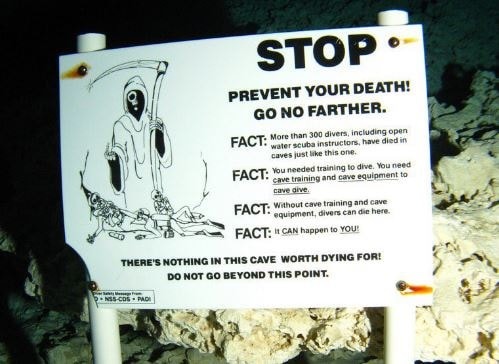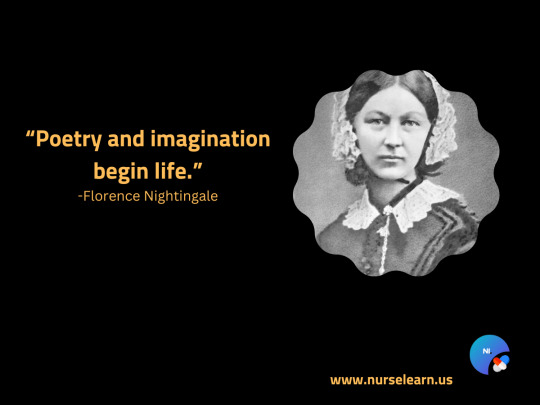Text
What are 10 supplies and equipment needed for filing a master patient index?
Patient demographic data: This includes patient's name, date of birth, address, phone number, and any other relevant information needed to identify the patient.
Medical records: This includes previous medical history, lab results, x-rays, and other medical documentation needed to ensure accurate patient care.
Identification and verification documents: This includes government-issued ID cards, insurance cards, and other documents needed to verify the patient's identity and insurance coverage.
Barcode scanner: A barcode scanner is used to scan patient identification and medical records for accurate data entry and tracking.
Computer: A computer is needed to input patient information and maintain the master patient index.
Printer: A printer is needed to print out identification and medical records for the patient's file.
Backup system: A backup system, such as an external hard drive or cloud-based storage, is needed to ensure that patient information is not lost in case of system failure.
Security measures: This includes measures such as password protection and encryption to ensure that patient information is kept confidential and secure.
Training materials: Training materials, such as user manuals and training videos, are needed to ensure that staff members are properly trained to use the master patient index system.
Maintenance and support: Regular maintenance and support of the master patient index system is needed to ensure that it is functioning properly and that any issues are resolved quickly.
#studyblr#mine#studyspo#study challenge#50 days of productivity#stem student#stem studyblr#spot the cat#myhoneststudyblr#eintsein#heyfrithams#heydilli#adelinestudiess#learnelle#stu dying#studywithme#study notes#student nurse#studying#nurses#study blog#education
22 notes
·
View notes
Text
Can filariasis cause death?
Filariasis, also known as elephantiasis, is a parasitic infection caused by a type of roundworm. It is transmitted by mosquitoes and can lead to severe, disfiguring swelling of the limbs and genitals.
In some cases, filariasis can cause serious complications and even death, especially in people with advanced disease or compromised immune systems. The most severe form of the disease is called chronic lymphatic filariasis (CLF), which is characterized by chronic lymphedema and elephantiasis of the limbs, genitals, and breasts. CLF can lead to secondary infections, chronic pain, and disability, which can greatly affect the quality of life of affected individuals.
However, death from filariasis is relatively rare, as the majority of people with the disease have a subclinical infection and do not develop serious complications.
Overall, filariasis can be prevented by using mosquito nets, controlling mosquito populations and using mosquito repellent and treated with medications such as diethylcarbamazine, ivermectin and albendazole.
#study notes#100 days of productivity#100dop#study#studyblr#student#studying#study inspiration#studyspo#study motivation#students#school#computer science studyblr#studyspiration#studymotivation#notes#html#academia#student nurse#studywithme#study blog#nurses#college#education
3 notes
·
View notes
Text
What advantage is it to a nursing home to accept patients who are on Medicaid?
A nursing home may choose to accept patients who are on Medicaid, the government-funded health insurance program for people with low income, because it can provide them with a reliable source of revenue. Medicaid pays for long-term care services provided in nursing homes and some assisted living facilities, which can help to cover the costs of providing care to these patients.
Some other potential advantages that a nursing home may experience when accepting patients on Medicaid include:
An increased census: Accepting Medicaid patients can help to fill beds in the nursing home, which is important for maintaining a stable financial footing.
Diversifying payer mix: By accepting a mix of patients with different types of insurance coverage, a nursing home may be able to better spread financial risk and reduce the impact of changes in reimbursement rates from any one payer.
Fulfilling a social responsibility: Many nursing homes are non-profit organizations or are government-funded, so accepting Medicaid patients can be seen as fulfilling their social responsibility to provide care for vulnerable population.
Helping to address a community need: Medicaid patients may not have other options for long-term care, and a nursing home that accepts these patients may be helping to address a need in the community.
It's worth to note that there are rules, regulations and reimbursement rates that vary from state to state and country to country that nursing homes must comply with when accepting Medicaid patients. In addition, there are also limitations on the type of care that Medicaid covers, and nursing homes need to ensure that they have the resources and staff to provide the necessary level of care
#studyblr#med school#nursing school#study blog#studywithme#student nurse#study notes#students#nurses#studying#college#education#studyspo#study aesthetic#study area#study hard#studyinspo#aesthetic#i hope you like them#student#study space#studyspiration#studystudystudy#cottage aesthetic#books & libraries#dark aesthetic#dark acadamia aesthetic#light academia moodboard#dark academia books#moodboards
2 notes
·
View notes
Text
Nurse Manager & Budget
Budgeting is one of the management functions of any organization. Owing to the scarcity of most resources, managers are responsible for stipulating budgets to ensure prudent allocation of such resources. Nurse managers` responsibility in budgeting involves efficient and effective utilization allocation and utilization of the scarce resources that include time and money. During the development of a budget, there are multiple strategies that nurse managers can employ to increase teamwork and participation in the budgeting process.
#study area#studyblr#study aesthetic#studyspo#dark academia books#book aesthetic#books#bookstore#books & libraries#bookblr#studystudystudy#studybrl#study space#study notes#notebooks#dark acadamia aesthetic#i hope you like them#moodchallenge#light academia moodboard#relaxingtime#studywithme#study blog#student#aesthetic#study academia#mine#chaotic academic aesthetic#cottage aesthetic#dark academia aesthetic#dark academia aesthetics
1 note
·
View note
Text
How an organization can protect patients` information
Establishing secure mechanisms is one of the approaches that an organization can employ in protecting patients` information from hackers. This begins with a thorough system evaluation to identify risks, identify vital security resources, establish a secure security plan, and provide a supportive organizational culture
#study#school#studyblr#nursing#studyspo#study motivation#academia#coffee#college#studywithme#study notes#student nurse#studying#study blog#students#education#nurses
1 note
·
View note
Text
In vitro fertilization (IVF)
In vitro fertilization (IVF) is a complex series of procedures used to help with fertility or prevent genetic problems and assist with the conception of a child. During IVF , mature eggs are collected (retrieved) from ovaries and fertilized by sperm in a lab
#study motivation#studyblr#studyspo#studyspiration#study inspiration#productivity#studying#study blog#mine#motivating myself#study notes#being productive#procrastination#studying is hard#photography#study space#studyabroad#coffee#women in stem#study tips#academia#academia aesthetic#studygram#study aesthetic#love yourself#take care of your mental health#my photography#warm academia
1 note
·
View note
Text
How to write a PESTLE
How to write a PESTLE analysis: basic tips
PESTLE is an analytical method that explores external factors that influence an organization. PESTLE stands for:
Political
Economic
Sociological
Technological
Legal
Environmental.
#study motivation#studyblr#studyspo#studyspiration#study inspiration#productivity#studying#study blog#mine#motivating myself#study notes#being productive#procrastination#studying is hard#photography#study space#studyabroad#coffee#women in stem#study tips#academia#academia aesthetic#studygram#study aesthetic#love yourself#take care of your mental health#my photography#warm academia
40 notes
·
View notes
Text

this is by far my favorite safety/warning sign btw. they really went off with this one
129K notes
·
View notes
Text
Oncology
Oncology nurses practice in a variety of settings including acute care hospitals, ambulatory care clinics, private oncologists' offices, radiation therapy facilities, home healthcare agencies, and community agencies. They practice in association with a number of oncologic disciplines, including surgical oncology, radiation oncology, gynecologic oncology, pediatric oncology, and medical oncology.
#oncology#students#study tips#study notes#studyblr#study blog#studywithme#studying#nurses#education#student nurse#college studyblr#new studyblr#study aesthetic#study hard#study inspiration#study motivation#study space#study with me#studyblr community#studygram#studyinspo#studyspiration#studyspo#studystudystudy#art study#student
4 notes
·
View notes
Text
Nursing Quotes
#dark academia#light academia#dark acadamia aesthetic#excerpts#fragments#poetry#romanticism#books & libraries#dark academism#litblr#chaotic aesthetic#chaotic academia#soft academia#light academism#light academia moodboard#vintage academia#vintage aesthetic#on life#about life#lovecore#cottage academia#cottagestyle#forest cottage#classic academia#coffee and tea#aesthetic#softcore#spilled thoughts#student nurse#studywithme
2 notes
·
View notes
Text
5 nursing care plans for a patient with Postpartum Thrombophlebitis
Thrombophlebitis is inflammation with the formation of blood clots. It occurs in 1 in 1500 pregnancies. The three most common thromboembolic conditions during the post partum period are superficial venous thrombosis (SVT), deep vain thrombosis (DVT), and Pulmonary embolism (PE)
Ineffective Peripheral Tissue Perfusion
Acute pain
Impaired gas exchange
Anxiety
Deficient knowledge
#studyblr#mine#studyspo#study challenge#50 days of productivity#stem student#stem studyblr#spot the cat#myhoneststudyblr#eintsein#heyfrithams#heydilli#adelinestudiess#learnelle#stu dying#studywithme#study notes#student nurse#studying#nurses#study blog#education
12 notes
·
View notes
Text
Change world
I am not here to change the world. I am changing the world because I am here.....
#dark academic aesthetic#doctors#student nurse#studywithme#study notes#study motivation#motivating quotes#motivation#study inspiration#studyblr#studygram
1 note
·
View note
Text
It's never too late
I left school age 15, pregnant and with no qualifications. I couldn't return to education as I had Dave to look after. I took my American GED when I was 30. I took my GCSE's when I was 36 and started my degree when I was 46 and graduated before I turned 50.
#academic tumblr#academic problems#women in academia#academism#academic things#acadmic#acadmia#academia#academic#dark academia#art academia#classic academia#academia aesthetic#acdemia#light academia#grey academia#chaotic academia#light academic aesthetic#music academia#cottage academia#romantic academia#academicism#chaotic academic aesthetic#wine aesthetic#cottage aesthetic#aeathetic#moodboard aesthetic#moodboard
3 notes
·
View notes
Text

Poetry and imagination begin life
#studyblr#student#aesthetic#studyspo#studying#university#uni#coffee#latte#espresso#coffee house#cafe#study aesthetic#study space#academia#academia aesthetic#fall#cozy#soft girl#autumn#mental health#student nurse#studywithme#study blog#florence nightingale#studygram
3 notes
·
View notes
Text
Dissociative disorders
Dissociative disorders are mental disorders that involve problems with memory identity, emotion, perception, behavior, and sense of self. People who have endured physical, sexual, or emotional abuse during childhood are at a higher risk of acquiring dissociative disorders.
#studyblr#study blog#study motivation#study space#study tips#light academia#light acadamia aesthetic#dark academia#study hard#study#100 days of productivity#studyspo#dark acadamia aesthetic#student nurse#students#study notes#education#studying#studywithme
6 notes
·
View notes
Text
Critical care nurse
Critical care is best defined as care provided in the various ICUs and related units:
Cardiothoracic ICU
Oncology ICU
Neurocare ICU
Pediatric ICU
Neonatal ICU
Cardiac Catheter Labs
Telemetry Units
#study notes#student nurse#studywithme#studyblr#study blog#studying#students#nurses#critical care#critical care medicine#light academia#studygram
5 notes
·
View notes
Text
Functions of the blood
Blood is unique; it is the only fluid tissue in the body.
1. Carrier of gases, nutrients, and waste products. Oxygen enters blood in the lungs and is transported to cells. Carbon dioxide, produced by cells, is transported in the blood to the lungs, from which it is expelled. Ingested nutrients, ions, and water are carried by the blood from the digestive tract to cells, and the waste products of the cells are moved to the kidneys for elimination.
2. Clot formation. clotting proteins help stem blood loss when a blood vessel is injured.
3. Transport of processed molecules. Most substances are produced in one part of the body and transported in the blood to another part.
4. Protection against foreign substances. Antibodies help protect the body from pathogens.
5. Transport of regulatory molecules. Various hormones and enzymes that regulate body processes are carried from one part of the body to another within the blood.
6. Maintenance of body temperature. Warm blood is transported from the inside to the surface of the body, where heat is released from the blood.
7. pH and osmosis regulation. Albumin is also an important blood buffer and contributes to the osmotic pressure of blood, which acts to keep water in the blood stream.
#studyblr#mine#studyspo#study challenge#50 days of productivity#stem student#stem studyblr#spot the cat#myhoneststudyblr#eintsein#heyfrithams#heydilli#adelinestudiess#learnelle#stu dying#studywithme#study notes#student nurse#studying#nurses#study blog#education
29 notes
·
View notes